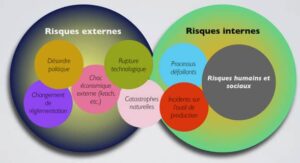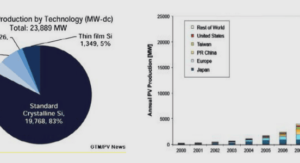THE IMPACTS OF MULTICULTURALISM IN TODAY’S
AMERICA
MULTICULTURALISM IN AMERICAN MIND
According to ANNA POTTER, “everyone she knows pretty much has a different history and cultural background”. 1 For herself, her grandparents are from the Netherlands and migrated to Canada, and when her mother was 10, they moved to California. Her Dad is from England and moved to California when he was in his 20s. She was born in England along with her sister, but since she mostly grew up in the United States, she would consider herself to be American. She thought that this is a huge advantage for culture in America to be able to make people born in different countries and from different backgrounds all feel like they belong. She knows other people with many different backgrounds and most of them could identify themselves as Americans. Thomas D Kingenstein argued in his essay that: many conservatives did not see that Trump had framed the 2016 election as a choice between two mutually exclusive regimes: Multiculturalism and America. What is called “multiculturalism includes identity politics and political correctness”. If multiculturalism continues to worm its way into the public mind, it will ultimately destroy America. Consequently, the election should have been seen as a context between a woman who, perhaps without quite intending it, was leading a movement to destroy America and a man who wanted to save America. The same context has been played out in the midterm elections. Multiculturalism conceives of society as a collection of cultural identity groups, each with its own worldview, all oppressed by white males, collectively existing within permeable national boundaries. Multiculturalism replaces American citizens with so called “global citizens”. It carves “tribes” out of a society whose most extraordinary success has been their assimilation into one people. It makes education a political exercise of the liberation of an increasing number of “others”, and makes American history a collection of stories of white oppression, thereby dismantling our unifying, self-affirming narrative without which any nation can long survive. During the 2016 campaign, Trump exposed multiculturalism as the revolutionary movement it is. He showed that multiculturalism, like slavery in the 1850 century, is an existential threat. Trump exposed this threat by standing up and its enforcement arm, political 3 correctness. Indeed, he made it his business to kick political correctness in the groin on a regular basis. In countless variations of crassness, he said over and exactly what political correctness prohibits one from saying “America does not want cultural diversity; we have our culture, it is exceptional and we want to keep it that way”. He also said, implicitly but distinctly: the plight of various “oppressed groups” is not the fault of white males. These two violates a sacred tenet of multiculturalism. Trump said these things at a time when they were the most needful things to say, and he said them as only he could, with enough New York “attitude” to jolt the entire country. Then to add spicy mustard to the pretzel, he identified the media as not just anti-truth but antiAmerican. Most conservatives did not see trump in 2016 as a man defending America. This was in large part because they did not see that America was in need of defending. What conservatives did see is trump‟s policies (which did not line up with conservative‟s ones) and his character (which did not line up, period), and they concluded the country was nowhere near in bad enough shape and Hillary Clinton not enough of a danger, to justify enthusiasm for a man so manifestly unfit for the role.Trump‟s entire campaign was a defense of America. The election was fought not so much over policies, character, email servers, or James Comey, as it was over the meaning of America. Trump‟s wall was not so much about keeping foreigners out as it was as a commitment to a distinctive country; immigration, free trade, and foreign policy were about protecting our own. In all these policies, Trump was raising the question, “who are we as a nation?” He answered by being Trump, a man made in America unmistakably and an apologetically American and like most of his fellow citizens, one who does not give a hoot what Europeans or intellectuals think. Clinton in the other corner was the great disdainer, a citizen not of America but of the world: a postmodern, entitled elitist who was just more of Osama, the man who contemptuously dismissed America‟s claim to be exceptional. What she called the “deplorable” where the “anti-multiculturalists”. She was saying, in effect that she did recognize the “deplorable” as fellow citizens, and they were as far as she was concerned, not part of the regime she proposed to lead. Perhaps, Trump most affective answer to Clinton‟s and the democrat‟s multiculturalism, was his attack in political correctness, both before and after the election. Trump scolded Jed Bush for speaking Spanish on the campaign trail. He pointed out that in 2011 some Muslims cheered the collapse of the twin towers. He said Mexico was sending us its dregs, suggested a boycott of star bucks after employees were told to stop “marry xmax”, told NFL owners they fire players who did not respect the flag, expressed the view that people what he called “shitholes” (Haiti and African countries being his examples) should not be allowed to immigrate, exposed to danger of selection judges based on ethnicity, and said Black Lives Matters should stop blaming others. The core idea of each of these anti-Pc Blasts, when taken in aggregate, represent a commitment to America‟s bourgeois culture, which is culturally “Judeo-Christian”, insists on having but one language and one set of laws and values: among other things, loyalty, practical experience, self-reliance and hard work. Trump was affirming the goodness of the culture. He was hardly the ideal preacher but, in a society, where people are thirsting for public confirmation of the values, they hold dear, they do not require pure spring water. Even trump‟s crass statements objectifying women did not seem to rattle Trump women voters, perhaps because it did not come as news to them that men objectify women. It was only a generation or so ago that the American elite, liberals as well as conservatives were willing to defend America‟s bourgeois culture, American exceptionalism, and full assimilation for immigrants. Arthur Schlesinger expressed his view of assimilation in this way: “the Anglo-Saxon protestant tradition…. provide the standard to which other immigrant nationalities are expected to conform, the matrix into which they are to be assimilated”. That meant giving up one‟s home culture, not necessary every feature and not right away, but ultimately giving up its essential features in flavor of American culture. In other words, there are no other hyphenated Americans.
The advantages of multiculturalism
Important benefits can be reaped from cultural diversity such as enhanced gastronomy, increased cross-cultural competencies, mental flexibility and tolerance in the population, artistic blossoming, social and political innovations, economic growth factors and much more. However, it may also present important challenges, such as discrimination, conflicts and a feeling of alienation especially if the human tendency to spoil perfectly good opportunities is given free rein. 4 NFL= National Football League 13 This leads to the need for societies that include different cultures to make certain choices concerning how they wish to respond to this situation: the stakes are high, and indecision represents too great a risk. The immigration act of 1965 is often cited as a watershed moment, a major policy change that opened the door to unusually divers streams of immigrants, giving rise both to new ethnic, religious, and linguistic groups and also sparking nativist reactions based on worries about a fraying national community. Opinions vary about whether multiculturalism and ethnic and racial diversity are decisive or beneficial to contemporary American society but most of those discussing the issue presume that these are relatively recent trends, especially characteristic of the late twentieth and early twenty-first century United States. Multicultural realities and ideals were present from the U.S founding. Subsequent eras have brought new waves of arrivals, adding more cultures and religions and languages into the mix, but not changing America‟s core identity so much as adding to it. Only one major period, the era between the 1920s quota acts and the 1965 immigration act brought a temporary partial delay in the USA march toward greater cultural diversity. Looking at the way back to the remarkable diversity of the America‟s revolutionary era, tells us much about the enduring models on which the society and the national identity are grounded. A law was passed, the Moors Sundry Act, recognizing South Carolina‟s Moroccans as “white” thus exempting them from laws governing free or enslaved African Americans and requiring them to fulfill certain civic obligations such as jury duty. A Moroccan American community lived in South Carolina during the revolution era, though its exact origins are unclear. Some members had likely been brought to north Americans slaves and then been freed; others may have arrived as immigrants fleeing the violence of Barbary pirates, encouraging to seek refuge by the 1786 treaty of friendship between the fledgling United States and Morocco. In any case, by 1790 the community was sizeable enough to necessitate action in the state legislature to clarify the status and citizenship of its members. The presence of this Muslim population contributed to two significant statements on religion in the new nation. The only reference of religion in the body of the U.S constitution, avowed that “no religion test shall ever be required as a qualification to any office”. 14 Chinese were legally excluded from immigrating to the United States between 1882 and World War II and beyond, many people presume that Chinese Americans arrived only starting in the late 20th century. The first Chinese immigrants arrived in Spanish California in the late 18th century, and by the time the United States took control of the region in the mid -19th century there were sizeable Chinatowns in both San Francisco and Los Angeles. Actually, the xenophobic 1882 Chinese Exclusion Act (the first national U.S. immigration law) represented a response to a century‟s worth of earlier arrivals from China. The first Filipino arrivals created a village that came to be known as Manila Town, a settlement that has endured ever since and represents one of the nation‟s oldest Asian American communities. After Louisiana was sold to the United States in 1803, Manila Town residents exercised their new American citizenship in a particularly striking way, by joining Jean Lafitte‟s multinational U.S. forces in the Battle of New Orleans during the War of 1812. To be sure, Revolutionary era America was defined by nativist, xenophobic fears as well as cultural diversity. Benjamin Franklin responded to German immigration into Pennsylvania by asking, “Why should the Palatine Boors [natives of a particular German region] be suffered to swarm into our Settlements, and by herding together establish their Language and Manners to the Exclusion of ours? Why should Pennsylvania, founded by the English, become a Colony of Aliens, who will shortly be so numerous as to Germanize us instead of our anglifying them, and will never adopt our Language or Customs, any more than they can acquire our Complexion?5 Still, a full accounting of America‟s multicultural past back to the Revolutionary era shows that religious, linguistic, and ethnic diversity and contrasting reactions to it are nothing new. Of course, contemporary U.S. society is evolving in complex ways, and cannot be understood as a mere repetition of the past. From its founding, the United States has been defined in no small measure both by sociocultural diversity and by intense conversations and conflicts about the meaning of diversity for our society, national identity, and politics. Multiculturalism presents many advantages in amerce such as: Innovation and creativity: In America, Immigrants who came from all around the world, win proportionally more prestigious literary and performing arts awards. Foreign direct investment into America is greater from countries that are well represented in America through immigration.so we can say that immigration played a very important role in the innovation of the United States. At least 35 per cent of America Research Chairs came from outside the country, even though immigrants make up only 20 percent of the American population. Immigration rates improve trade between America and immigrants‟ countries of origin. Multinational companies: A diverse population employed by some companies in different countries helps them capture global markets, increase customer base across nations, and earn profits easily. Professional: A mix of cultural experiences helps to solve problems, and can create in turn a strong team. Having a diverse group of workers always enriches the office environment, and can also improve the work culture. Employees coming from various cultures that lived in America can contribute with a wider range of perspectives on an assignment. Education: Children are educated about equality, to prevent the discrimination between them, and thus develop an attitude against racism. So many syllabuses of subjects have been change like history, to accommodate more understandable and broader parts of the past events. That can be seen as giving more exposure to children where they learn about multiples perspectives on a given subject.
Multiculturalism and the America’s National Identity
The American National Identity is not so much based on any particular culture but more on ideas. The “American dream”, freedom and progress are all part of the National Identity that most Americans could identify with on some level. „Who are we’? In this book written by Samuel Huntington, we can notice that the challenge to the national identity is rich with insights about the negative impacts of globalization in the United States from a truly American identity. After commencing the new millennium with wars in Afghanistan and Iraq, U.S. military torture of Iraqi prisoners, indefinite detentions of U.S. The daunting question posed by the title of the book is well worth asking. Citizens declared by the President to be « enemy combatants, » and a massive domestic « war on terror » that has punished and frightened Arab, Muslim, and other immigrant communities, many Americans have asked themselves the very same question. Forming a cohesive national identity with a heterogeneous population is a formidable task but, as Professor Huntington recognizes, critically important to the future of the United States. Professor Huntington identifies a remarkable loss of national identity in the United States over the tail end of the twentieth century, during the same period that the civil rights revolution forever changed the nation. In that analysis, who are we? Takes a controversial stance about U.S. immigration law and policy, which has proven to be a formidable challenge to policymakers and frequently touches a nerve with the public. He also sounds a familiar alarm that immigration and immigrant law and policy are both out of control and must be reformed. 6 1965 Immigration act , presented as symbolic ,changed nation also known as Naturalization ACT 18 In asking the nation to reconsider its immigration policies, Professor Huntington again asks a question well worth asking. Immigration frequently has provoked controversy in the United States and, even when not at the forefront, lurks ominously in the background of the discussion of many policy issues, from public benefits to affirmative action to driver’s license eligibility for undocumented immigrants. Huntington sees immigration and immigrants as transforming a White-Anglo-Saxon cultural nation and at the same time he fears what he sees on the horizon for the United States, which he suggests is something apocryphal, raising the specter of the fall of Rome. In the book of Samuel Huntington, he expresses the fear about the impacts of immigrants‟ specifically Mexican immigrants in in USA, its culture and its way of life. May 2005, Immigration and National Identity 1349 start changing slowly but surely as new and different culturally and otherwise immigrants are coming in large numbers to the United States. Moreover, immigration law impacts domestic minority communities and civil rights in the United States. Unfortunately, such aspects of immigration law are frequently overlooked in academic studies of the subject. We agree with Professor Huntington that national identity is at the center to the discussion of immigration and immigrants. . Immigration has well contributed to the multicultural nature of the United States and has transformed the nation and its civil rights agenda since the founding of the country . In turn, the types of race and culture of immigrants affect the national identity. Immigration, as it has done throughout U.S. history, is shaping the face of the America. Indeed, Professor Huntington’s prescription of assimilation and the end of any racial and ethnic consciousness is a more general critique of identity politics and, at its core, a challenge to multiculturalism. He leaves little doubt that he deeply disagrees with the claim of Nathan Glazer that « we are all multiculturalists now. America cannot ignore the impacts of immigration on national identity, race, and civil rights if it wants to avoid potential unrest from those opposing the transformations taking place the vigilante groups in Arizona using violence to enforce the immigration laws, immediately come to mind and immigrants who may resist efforts at forced assimilation, deportation and other actions that adversely impact immigrant communities. 19 In order to integrate immigrants into the political, social, and economic fabric of the United States, a very important public policy issue that fully warrants the careful attention of academics and policymakers, should be establish. To avoid the changes risks a domestic explosion like that which the nation has never seen. Law and policy should strive to foster integration of immigrants into U.S. society, for example, by seeking to eliminate the immigrant caste structure in the labor market. One weakness of, Who Are We? Is that it fails to weigh the positive impacts of immigration and immigrants. The 1350 Michigan Law Review has often done the opposite with distinctions between different groups of immigrants thwarting, if not facilitating, their assimilation into American social life. Importantly, immigration is a function of economic, social, and political pressures that are not wholly within any one nation’s sovereign control. Closed borders simply are not a policy option in the United States today. We strongly disagree, however, with Professor Huntington’s normative evaluation of the impacts of immigration and what changes in immigration law and policy are necessary. Consequently, it resembles a cost-benefit analysis that focuses exclusively on costs. Nor, in light of the modern civil rights consciousness, are blanket prohibitions on the immigration of certain races or national origins generally viable. Indeed, the various national origin, religious, and other profiling measures utilized by the federal government in the « war on terror » with national security perhaps the most compelling justification for such measures have provoked controversy. In Professor Huntington’s estimation, Mexican immigrants refuse to assimilate into the mainstream of U.S. society and live and act in separatist. One aspect of Professor Huntington’s analysis has provoked anger and strident charges of racism. One can acknowledge the changes brought by immigration, proclaim the need for the assimilation of immigrants, and, at the same time, offer more constructive approaches than the alarm and pessimism of Who Are We? Professor Huntington’s book is surprisingly slim on policy recommendations.
TABLE OF CONTENTS |





